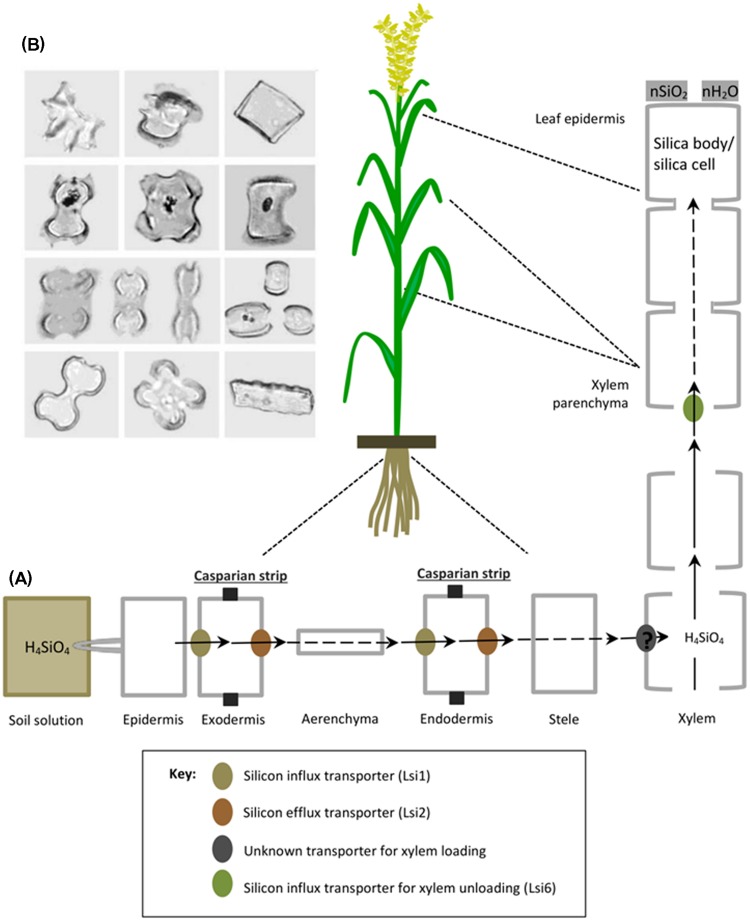FIGURE 2.
A schematic representation of silicon uptake, transport and accumulation in rice. (A) Rice roots absorb silicon (as silicic acid) from soil solution, which is transported to the root exodermis by influx transporter (Lsi1) and subsequently released to the apoplast of the aerenchyma by an efflux transporter (Lsi2). Successively, it is transported into root endodermis by Lsi1 and released to the stele by Lsi2. Then silicic acid is loaded into xylem by an unknown transporter and translocated to the shoots via the transpiration stream. In leaves, silicic is unloaded by another influx transporter (Lsi6), localized in the xylem parenchyma cells of leaf sheaths and leaf blades. In shoots and leaves, silicon is transformed from aqueous form (silicic acid) to solid amorphous silica (SiO2–nH2O) called silica bodies/silica cells and deposited mainly in the cell walls of different tissues such as leaf epidermal cells. Reproduced with permission from Ma et al. (2011), copyright Proceedings of the Japan Academy, Series B. (B) Various morphological shapes of silica bodies detected in leaves of different grass families, reproduced with permission from Piperno and Sues (2005).

